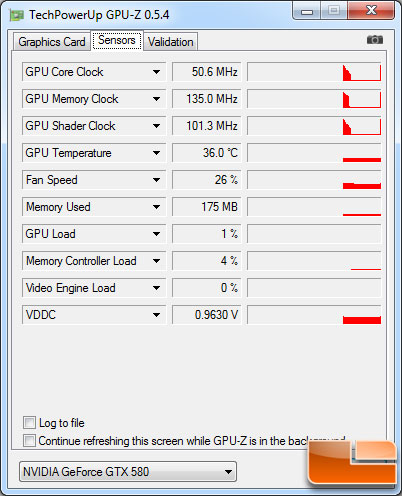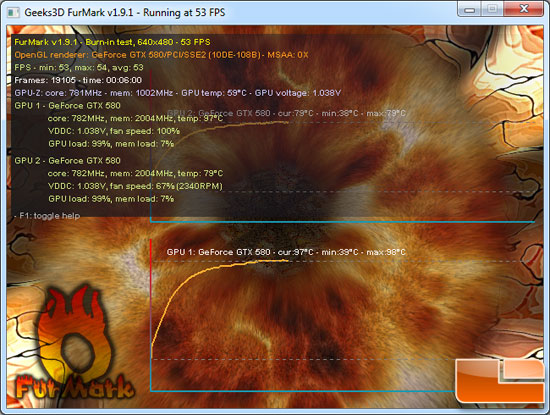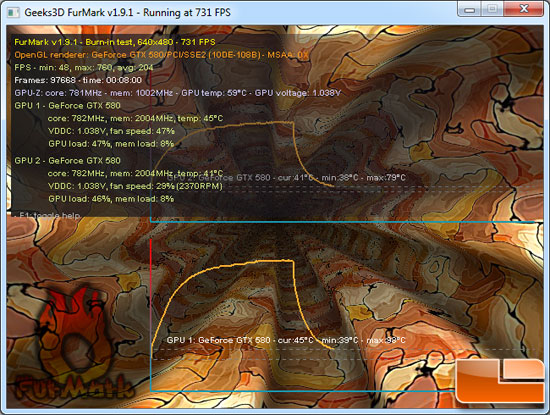ASUS ROG MARS 2 3GB Video Card Review w/ NVIDIA Surround
Temperature Testing
Since video card temperatures and the heat generated by next-generation cards have become an area of concern among enthusiasts and gamers, we want to take a closer look at how the graphics cards do at idle and under a full load.
ASUS MARS 2 Video Card Idle Temperature:

As you can see from the screen shot above, the ASUS ROG MARS 2 had power idle states of 50.6MHz on the GPU core clock, 101MHz on the shaders and 135MHz on the memory. We observed the ASUS MARS 2 to idle at 36C in a room with a temperature of 22C.
We fired up FurMark v1.9.1 and ran the stability test on extreme burn-in mode at 640×480, which was enough to put the GPU core at 100% load in order to get the highest load temperature possible. This application also charts the temperature results so you can see how the temperature rises and levels off, which is very nice. The fans on the video card were left on auto during temperature testing. When we hit the space bar to stop the rendering the temperature dropped.
ASUS MARS 2 Video Card Load Temperature:

The ASUS MARS 2 peaked at 79 on one core and 98C on the other according to Furmark after six minutes of running Furmark 1.9.1 at a resolution of 640×480 on extreme burn-in mode. We aren’t sure why one core was so much hotter than the other and we haven’t removed the HSF’s off the card. There could be a contact issue on one of the GPU coolers or Furmark/GPU-Z isn’t properly reporting the temperature on one of the GPU’s.

We hit the space bar to stop the test and the temperatures dropped back down really quick thanks to the two cooling fans. We were back within six degrees Celsius of where we started in under two minutes!

Comments are closed.